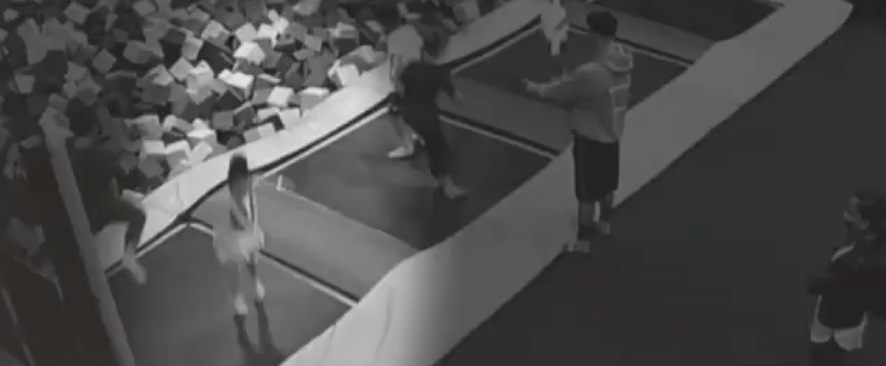The trampolines are too small to attempt any skills. The trampoline bed near the edges is too hard and can cause traumatic injury. Landing on the pad that covers the frame and springs can cause traumatic injury.
Number 2:
Jumping “laterally”, instead of “vertically”, from trampoline-to-trampoline places torsional or sideway force on your legs and can cause traumatic injury.
Number 3:
The trampolines in a trampoline court are interconnected which means that energy from the other trampolines affects your trampoline and can cause traumatic injury.
Number 4:
The force of the trampoline returning to its normal position in a trampoline park is greater when compared to consumer or gymnastics trampolines and can cause traumatic injury. Injuries occur when two people are on the same trampoline and a “double bounce” occurs.
Number 5:
Trampoline parks do not offer skill assessment and take no responsibility for determining whether a person should be on a trampoline or attempt certain skills.
Number 6:
Trampoline parks do not offer instruction. It is up to the user to learn trampoline bouncing skills and how to avoid injury.
Number 7:
Trampoline parks do not offer professional supervision. Trampoline parks typically hire teenagers in entry level and transitional positions to supervise the trampoline park attractions.
Number 8:
Children six and younger are not supposed to bounce on trampolines. Trampoline parks have no minimum age and promote activities for toddlers.
Number 9:
Children six and younger are supposed to be segregated in a “children zone” to keep them safe from being double bounced or in a collision with a bigger person. Trampoline parks often ignore this recognized standard.
Number 10:
Trampoline parks combine other sports, such as dodgeball, basketball dunk, wipe out, with jumping on trampolines that distract the user and others on the court from jumping safely and can cause traumatic injury.
Number 11:
The unsafe design of the trampoline park trampoline court (small size; hardness; energy coming from other jumpers; force of the trampoline returning to its normal position; being distracted by playing a sport or other nearby users, “Glow Nights”, loud music, a chaotic environment), alone and in combination, makes attempting advanced skills such as trampoline to trampoline jumping, wall jumping, and flips especially dangerous and can result in life-altering injuries.
Number 12:
Trampoline parks promote aerial skills in their marketing ads. A missed flip can easily break the neck and leave a person quadriplegic for life. The defective trampoline design, lack of skill assessment, lack of instruction, and the often-chaotic environment of a trampoline park, has resulted in this tragic outcome more often than people know. Flips in trampoline parks should not be allowed, unless they are attempted under professional supervision.

